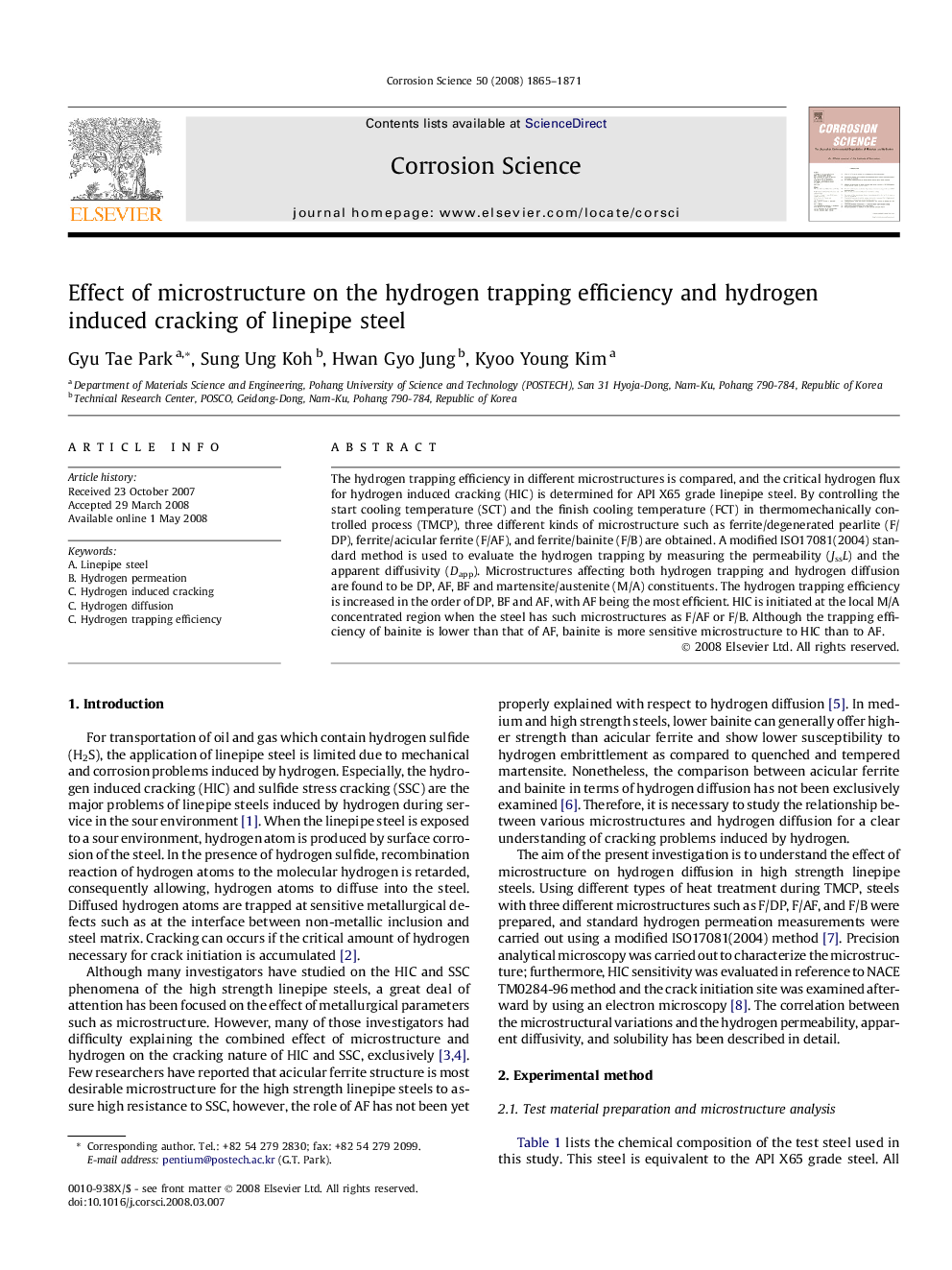| کد مقاله | کد نشریه | سال انتشار | مقاله انگلیسی | نسخه تمام متن |
|---|---|---|---|---|
| 1471356 | 990348 | 2008 | 7 صفحه PDF | دانلود رایگان |

The hydrogen trapping efficiency in different microstructures is compared, and the critical hydrogen flux for hydrogen induced cracking (HIC) is determined for API X65 grade linepipe steel. By controlling the start cooling temperature (SCT) and the finish cooling temperature (FCT) in thermomechanically controlled process (TMCP), three different kinds of microstructure such as ferrite/degenerated pearlite (F/DP), ferrite/acicular ferrite (F/AF), and ferrite/bainite (F/B) are obtained. A modified ISO17081(2004) standard method is used to evaluate the hydrogen trapping by measuring the permeability (JssL) and the apparent diffusivity (Dapp). Microstructures affecting both hydrogen trapping and hydrogen diffusion are found to be DP, AF, BF and martensite/austenite (M/A) constituents. The hydrogen trapping efficiency is increased in the order of DP, BF and AF, with AF being the most efficient. HIC is initiated at the local M/A concentrated region when the steel has such microstructures as F/AF or F/B. Although the trapping efficiency of bainite is lower than that of AF, bainite is more sensitive microstructure to HIC than to AF.
Journal: Corrosion Science - Volume 50, Issue 7, July 2008, Pages 1865–1871